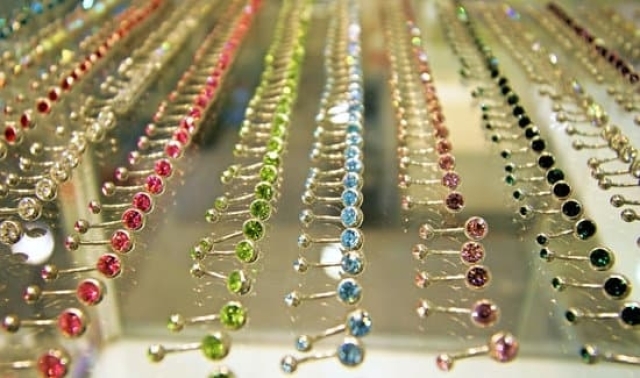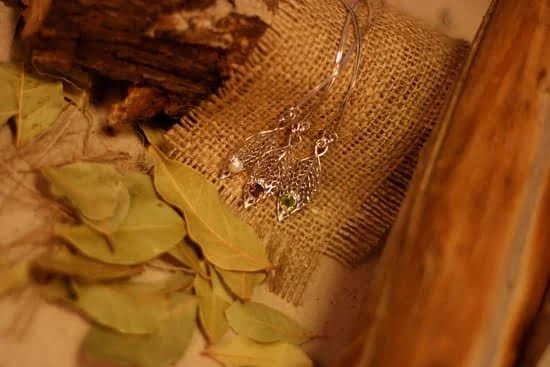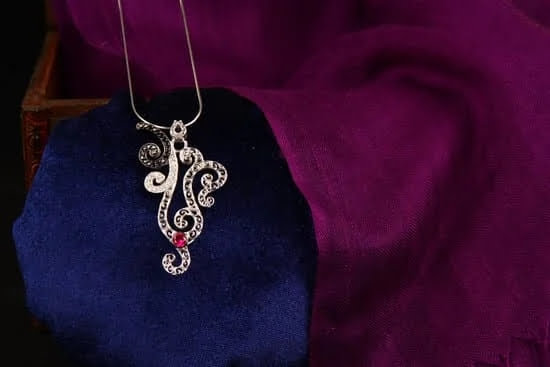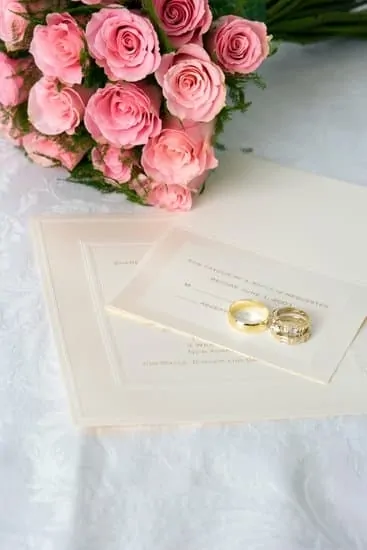Metals jewelry is a form of art or an accessory used for personal adornment. It includes any pieces made out of precious metals, such as gold, silver and platinum. This type of jewelry also includes metal alloy pieces such as sterling silver, brass and copper. Metals jewelry is available in hundreds of shapes, sizes and combinations of different metals. Precious metals are often used in combination to create unique looks and styles for the wearer.
History Of Metals Jewelry Metals jewelry has been around since ancient times, with the oldest known examples dating back to the 3rd millennium BCE. Examples include prehistoric shell beads made from bronze and hammered gold beads found in Queen Puabi’s grave at Ur from c. 2600 BCE. Throughout history, the use of metals in jewelry has grown considerably with each civilization having their own unique styles that were distinct from other cultures around them.
Many ancient cultures such as the Egyptians and Greeks used gold to create elaborate pieces featuring intricate designs that often depicted important religious figures or symbols associated with various gods they held dear. Silver was also popular among certain societies, especially amongst Celtic peoples who often had complicated knots woven into their necklaces or bracelets depicting various deities in their belief systems.
In addition to this; Native Americans also crafted spectacular pieces out of copper, which were considered a sign for health and prosperity by many tribes across North America.
Modern Day Uses Of Metals Jewelry In modern times, metals finds its way into almost every piece of jewelry you can find on the market today thanks to advances in technology making it much easier to create complex pieces using different types of metals combined together.
Gold is still one of the most popular choices for wedding rings due to its luxurious look and shiny finish which symbolizes everlasting love between two people getting married; but items made out white gold/silver are frequently bought because they usually cost less than those crafted with pure gold material yet still have a stunning classy look everyone can appreciate.
stainless steel has even become popular for masculine accessories like watches and bracelets for its durability while titanium offers a lightweight but durable alternative available for both men’s & women’s jewelries alike. Altogether these options along with many other materials & combinations shows just how diverse the use of metal jewelry can be in creating timeless accessories for anyone’s style needs.
History of Metals Jewelry
Metals jewelry has been used for decorative purposes since ancient times. It was initially used as a symbol of power, prestige and status among the different societies, tribes and nations. The precious metals of gold and silver were often used to create intricate decorations, including necklaces, earrings, and bracelets.
Metals jewelry was also believed to hold spiritual or religious significance in many cultures. In some cases it was even used as currency or exchanged in bartering activities. As mankind spread out from its earliest settlements, trading of metals jewelry became much more common place and this facilitated the spread of styles throughout different regions of the world.
Advancement and Popularity
With innovations in technology came great advancements for metals jewelry production. Tools such as bronze casting allowed artisans to craft intricate shapes and designs that weren’t feasible just a few centuries earlier. Jewelry also became much more affordable due to industrial production processes which mass-produced cheaper versions with lesser precious metal content.
Many new alloys such as stainless steel and titanium were developed during this period, further adding to the variety available for consumers. By the turn of the 20th century, wearing metals jewelry had become commonplace among not only royalty but everyday citizens across the world as society now embraced stylistic trends that signified fashion rather than just status alone.
Modern Metals Jewelry
Today metals jewelry is an important part of most cultural traditions around the world. Whether adorning oneself with diamond studded gold rings and necklaces or simply wearing an alloyed bangle bracelet for a special occasion, people everywhere draw upon these stylish designs to express their own unique identities within their communities.
Professional artisans continue to innovate new ways to work with these various materials while everyday fashion enthusiasts find inspirational ideas by browsing through digital catalogs and online stores searching for the perfect piece that can make any ensemble accentuated with style definition complete.
Different Metals Used to Make Jewelry
There are several different metals used to make jewelry. Each metal has its own unique properties and characteristics that change how the final piece is crafted and looks. Depending on the desired look of the jewelry, the ideal metal can be determined. Here is a list of popular metals commonly used for making jewelry:
- Gold
- Silver
- Platinum
- Palladium
- Copper
- Titanium
Gold is one of the oldest materials used in jewelry making. It has been one of the favorite metals due to its warm yellow color and long wearing durability. Gold also comes in several different purities, ranging from 10K and up, which provides versatility when designing a custom piece of jewelry.
Silver is another popular choice when crafting jewelry due to its reflective nature and ability to be manipulated into various shapes. Silver is less expensive compared to gold, which makes it more affordable for people who want to decorate themselves without breaking their budget. Additionally, silver tarnishes over time giving it a signature unique aging look that’s appreciated among modern designs.
Platinum is a white metal that’s known for its strength, durability, and rarity. Due to its low reactivity it requires no plating or coating, unlike gold or other metals that need protective layers before being worn as an accessory. Platinum pieces last much longer than other metals because it’s so dense and heavy-duty; this makes it very desirable for wedding rings and other expensive items as well as special gifts that will last lifetimes or even generations.
Pros & Cons of Each Metal Type
Gold
Gold is an incredibly popular choice for jewelry, as it is extremely flashy and beautiful. The metal is quite malleable, meaning it can be dropped into a number of shapes and designs without any difficulty. However, gold can be expensive, and the cost will depend on the carat weight.
Silver
Silver has an almost equally beautiful appearance to gold, but at a fraction of the price. In addition to its affordability, silver is extremely light and therefore comfortable for extended wear. However, it has a tendency to tarnish if not taken care of correctly. Since silver oxidizes when exposed to elements such as water, wind, or pollen in the air, cleaning and polishing your silver jewelry regularly is important if you want to maintain its brilliant shine and original appearance.
Platinum
If you’re looking for something a little more durable than either gold or silver then platinum might be your best choice. It’s also quite expensive though not quite as expensive as gold and rarely tarnishes so there won’t be any need for regular polishing.
Platinum jewelry isn’t just resistant to damage but also stronger too; making it less likely break throughout its lifetime than other metals such as gold or silver would be prone to doing so.
Different Jewelry Making Techniques
Metals jewelry is one of the oldest forms of human craftsmanship. Throughout history, artisans have used gold, silver and other metals to form beautiful and intricate pieces for adornment. While there are many techniques available to metal workers, there are a few that are commonly used to make jewelry.
Casting
Casting is one of the oldest methods for making metal jewelry. It involves pouring molten metal into an uncovered or covered object mold so that when it solidifies it takes on the shape of the model inside. This technique allows for intricate details that would be difficult to do by hand. There are two basic types of casting: sand casting and investment casting.
Rolling & Drawing
Rolling and drawing can be used to create small, thin pieces as well as large sheets of metal suitable for jewelry making. Sheets created through rolling are great for covering larger shapes such as hollow beads or crafting jewelry out of flattened sheet metal designs using cold connection techniques such as riveting, piercing and soldering.
Granulation
Granulation is a technique which can also be used with sheet metal to create raised decorative patterns on the surface skin by affixing tiny spheres on the sheet metal by fusing them together with attached grains of silver or gold solder. The result can add great texture and detail to certain projects when combined with other techniques such as hammer texturing or stamping.
- Types Of Jewelry Making Techniques:
- Casting
- Rolling & Drawing
- Granulation
Differences Between Metals Used to Make Jewelry
Sterling Silver
When talking about metals used to make jewelry, sterling silver is one of the most popular options. This metal consists of a “combination of aluminum, copper and zinc”, with copper being the predominate member at 92.5%. Sterling silver is relatively affordable, making it an ideal material for crafting various types of jewelry pieces. Additionally, sterling silver can be electroplated or plated with other precious metals to make it more durable and lustrous.
Gold
Gold is another popular metal used in many different types of jewelry designs. Gold is a soft metal and is naturally yellow in color when pure. However, gold can be combined with other alloys like nickel or silver to alter its appearance or soften it enough to shape the jewelry pieces that we see on the market today. Pure gold proves to be too fragile and can easily crack if manipulated without the right techniques and machinery.
Platinum
Platinum is one of the densest elements which makes it very tough and resistant to scratches and dents – perfect for making strong and resilient pieces of jewelry. Platinum has a beautiful white/gray hue that gives off a remarkable luster that does not fade away like some other metals do over time when exposed to air often.
Its extraordinary properties allow jewelers to create incredibly intricate designs in no time at all. Additionally, platinum does not require any additional rhodium plating since platinum itself doesn’t fade away quickly with air exposure even after many years of wearing it regularly.
Advantages of Using Different Metals for Jewelry
Jewelry made from different metals can provide several advantages for the wearer. Metals such as brass, gold, silver, and titanium provide unique benefits that can improve the look and feel of jewelry. As with any type of material used in jewelry production, each metal has its own characteristics and value which must be considered before making a purchase. Here are some of the advantages of using different types of metals for jewelry:
Durability
Metals such as gold, silver, and titanium have excellent corrosion resistance properties making them ideal for creating durable pieces of jewelry that will last for years. Silver is also known to be highly lustrous while gold’s luxurious qualities make it an ideal choice for those looking to invest in long term accessories. Titanium is also incredibly strong and lightweight – perfect for wearables like watches and bracelets due to its strength-to-weight ratio.
Affordability
For those on a budget, brass can offer instant affordability when compared to other metals such as gold or platinum. In addition to being affordable in comparison, brass also has good malleability meaning that it can easily be worked into intricate shapes over time without sacrificing quality or strength. Brass is a great option if you are considering investing in statement pieces since it can look stunning when set with gemstones or enamel coating.
Eco-friendly Option
Having an option that caters towards eco-conscious jewelry lovers is important; gold is becoming increasingly popular thanks to its sustainable credentials such as recyclable materials, low energy consumption in production and reduced waste disposal amounts. Moreover, there are plenty of non allergenic materials available which means anyone looking for hypoallergenic jewelry does not need to look any further than gold or palladium which prove to be great alternatives.
Precious Metals & Why They Are Popular
The demand for precious metal jewelry is extremely high. Many people prefer certainsuch as gold, platinum or palladium due to their value. Most users of these metals believe that they provide the highest aesthetic appeal and quality compared to other materials used in jewelry like base metals. Precious metals are also popular because of their durability making them ideal candidates to last a lifetime while still appearing as new.
Types of Precious Metals Used In Jewelry:
- Gold
- Platinum
- Palladium
- Silver
The most sought-after precious metal when it comes to jewelry is gold. The rich luster of yellow gold has captivated people’s attention (and money) since ancient times, making it one of the most popular choices when it comes to buying jewelry items. Other colors such as white and rose have been developed over time which brings unique properties back into gold’s usage including modernity, beauty and affordability.
Platinum has grown in popularity due its rarity. It is considered highly valuable due to how rare it can be found, and its lustrous white color gives many jewellery pieces a regal look that’s not easy to duplicate with other metals. The downside of using platinum is that it is fairly expensive compared to other precious metals on the market today.
Palladium is another metal well-known for its strength and affordability. It too has grown in popularity over the years for being lightweight while still possessing incredible strength, all at a much more reasonable price than what platinum offers. This makes it an attractive option for those looking for strong but affordable jewellery pieces that look great and last long too.
Detailed Look at Gold, Silver & Platinum
Gold
Gold is the most commonly used metal for jewelry and has been used to make ornamental items since ancient times. Gold is a relatively soft, malleable metal that can be mixed with other metals or alloys to create beautiful pieces of jewelry.
Gold jewelry is also a great choice for those with sensitive skin, as its surface won’t cause irritation. The color of gold will vary based on the karatage (purity) of the gold; 24K gold is the purest form and it will appear yellow-gold, while lower karatages will have more of an orange hue.
Silver
Silver has a much softer and more muted appearance than gold and is becoming increasingly popular in modern jewelry making. Silver can often be found in everyday pieces such as bracelets, rings, earrings, necklaces and even watches.
Although silver isn’t as strong or durable as some other metals such as gold or platinum, silver jewelry has a very distinct white tone that makes it timeless and elegant. Sterling silver contains 92.5% pure silver combined with copper which gives it strength and longevity while still preserving its white color over time.
Platinum
Platinum is one of the most desirable metals when it comes to making jewelry due to its rarity extrmely durable nature. Platinum is naturally white in colour and won’t tarnish or change color over time so it’s suitable for creating timeless pieces that can last generations.
It’s also hypoallergenic so there are no risks for those with sensitive skin when wearing platinum-based jewellry. Platinum also remains brighter than white gold which makes it one of the most preferred materials for creating engagement rings as well as other high end jewellery pieces.
Unique Jewelry Ideas Created with Metals
Metals jewelry is the perfect way to showcase individual style and fashion. Whether it’s a precious metal or common metal, metals jewelry can be used in a variety of ways for decorations, accents and accessories. Many modern pieces incorporate metals along with other materials like ceramic beads or glass stones for an unexpected decorative flair. Here are a few ideas for making unique jewelry items using metals:
Charm Bracelets – Charm bracelets have become an iconic piece of jewelry that many people collect. By incorporating metal charms in the bracelet design, these pieces will stand out compared to traditional beaded charm bracelets. Each charm can represent something special and sentimental about the wearer while also staying fashionable with its metallic touch.
Earrings – Earrings are always seeing fresh takes on their designs, as designers use metals to add shape, texture and depth to earrings that range from delicate studs to statement-making dangles. Metals come in a wide variety of colors and finishes which make them perfect for creating earrings that fit almost any look and occasion.
Statement Necklaces – Statement necklaces have also become popular when it comes to accenting outfits with some stylish flair. Using metallic chains is an easy way to kick up the style of any necklace design without taking away from the intricate details centralized around larger centerpieces like stones or pendants. Adding metallic links in between each gemstone creates an eye-catching contrast that will draw attention anywhere the wearer may go.
By exploring unique design options with metals through jewelry, fashionistas can show off their personal sense of style with custom designs that come together perfectly with colorful patinas and polished finishes on stunning pieces made with pure class.
Maintenance Tips for Metals Jewelry
Metals jewelry can be crafted from a wide range of precious and semi-precious metals. Gold, silver, and platinum are the most popular choices for making jewelry for both men and women. Though these metal pieces are lovely to look at, they do require regular cleaning and maintenance in order to keep them looking their best. Here are some simple tips to help keep your precious metals jewelry shining bright:
- Regularly inspect your metal jewelry for signs of wear or damage.
- Clean using a soft cloth or grime removing solution designed for use with metal.
- Take off any piece of metal jewelry before swimming or showering.
- Add polish after cleaning that is formulated to work on the specific type of metal used in your piece.
To maximize the beauty of your jewelry, always follow directions when it comes to proper care techniques. There are many different At Home solutions designed specifically to remove tarnish and dirt from these types of pieces. For best results, start by soaking the abrasive materials in the cleaner and then gently swab away dirt with a clothe. After each cleaning session, be sure to rinse thoroughly with water before buffing dry with a soft cloth.
When traveling or storing pieces long term, make sure that protective cases or bags made specifically for jewelery storage are utilized. These will protect against wear due unwanted contact with other surfaces as well as factors such as air moisture & humidity that can prematurely age items over time.
For silver and gold based pieces it’s also important to keep away from items like perfumes and gels as they contain chemicals which discolor or dull the luster of materials over time if they come in contact too often. Additionally those who plan to regularly wear gold should invest in an anti-tarnish dip designed specifically for this purpose which will retard corrosion caused by oxidation processes.
The Benefits of Investing in Metals Jewelry
Metals jewelry like rings, necklaces and earrings can be made from a variety of metals such as gold, silver, platinum and copper. Although gold is the most popular for adornment purposes, many people also opt for sterling silver jewelry as it is much less expensive than gold and still offers beauty and durability.
When investing in metals jewelry it is important to keep in mind that there are several benefits. The obvious benefits include its long-lasting nature which is due to the fact that metal jewelry does not deteriorate over time like other materials like leather, bamboo or crystals would do. Metals are very durable so no matter how based or worn the piece may be, it doesn’t scratch easily.
It therefore has a greater chance of maintaining its original condition over a longer period of time thereby increasing its value with time. Additionally, metals have an intrinsic value due to the precious elements found within them. Therefore metals in general will retain their value no matter how much fluctuation may occur in the market.
Overall investing in metals jewelry can prove to be an excellent decision for individuals looking at holding onto items with long lasting value. It’s prudent to do your due diligence on any potential pieces you decide to invest in because not all metals have equal values when it comes to desirability and longevity.
Researching particular types of jewels can help buyers get informed on styles of metal as well as helpful tips on care that ensures prolonging their beauty and shine so they can be enjoyed forever generation after generation.

Welcome to my jewelry blog! My name is Sarah and I am the owner of this blog.
I love making jewelry and sharing my creations with others.
So whether you’re someone who loves wearing jewelry yourself or simply enjoys learning about it, be sure to check out my blog for insightful posts on everything related to this exciting topic!





